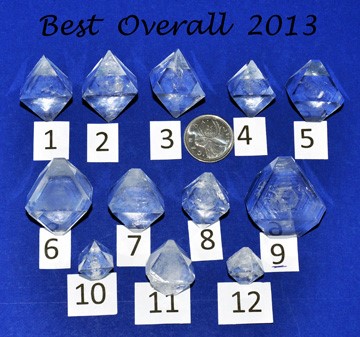Thanks to all schools who took part in this year's competition.
23 schools registered and received Alum samples and of these 7 schools sent in a total of 67 crystals for judging.
The crystals were judged based on the previously stated criteria (on the Registration page) – mass (must be greater than 0.5 g), clarity and shape (highest scores to crystals which most closely matched the idea shape of an octahedron (8 triangular flat faces with sharp edges). Points were also lost for crystals that were not single – ie there was more than one crystal merged together.
In each of the three age groups, prizes were awarded for the top three crystals and all schools that sent in crystals will receive a certificate acknowledging their participation.
The winners are as follows.
Senior Age Group (Years 11-13)
1st Jorgee Robb & Karna McKay Gore High School
2nd Renee Anderson Anderson Family
3rd Hena Dugh & Mae Gilmour Hastings Girls High School
Intermediate Age Group (Years 9-10)
1st Thimeth Wijesinghe Christs College
2nd Daniel Anderson Anderson Family
3rd = Patrick Johnstone Gore High School
Hannah Stewart Gore High School
Junior Age Group (Years 7-8)
1st Kaitlyn Porter Fairfield Intermediate School
2nd Molly Edwards, Hayley Williams & Becky Dudson
Fairfield Intermediate School
3rd Alexander Mayo Fairfield Intermediate School
Congratulations to all those who won prizes and our sincere thanks to all those who took part.
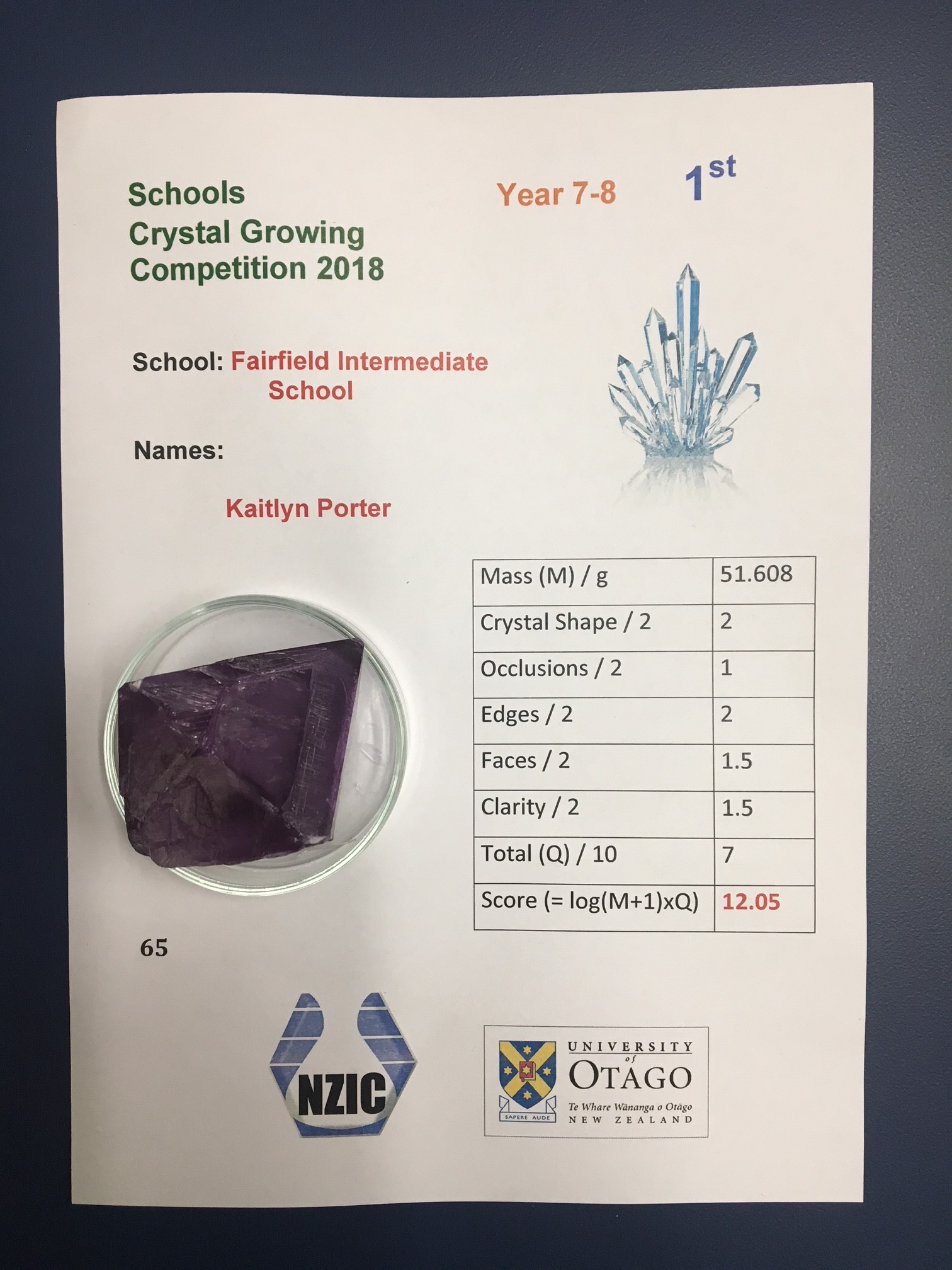
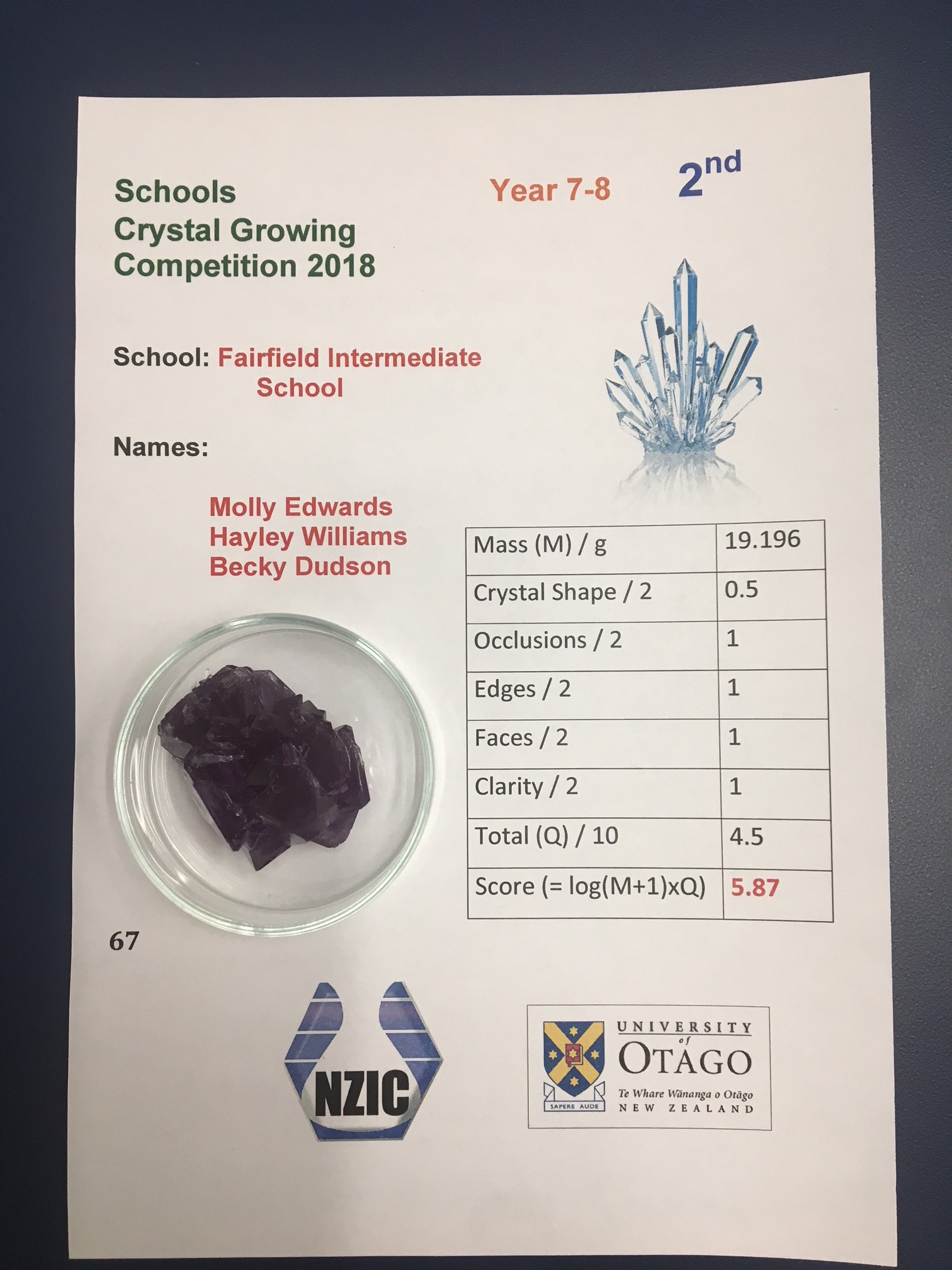
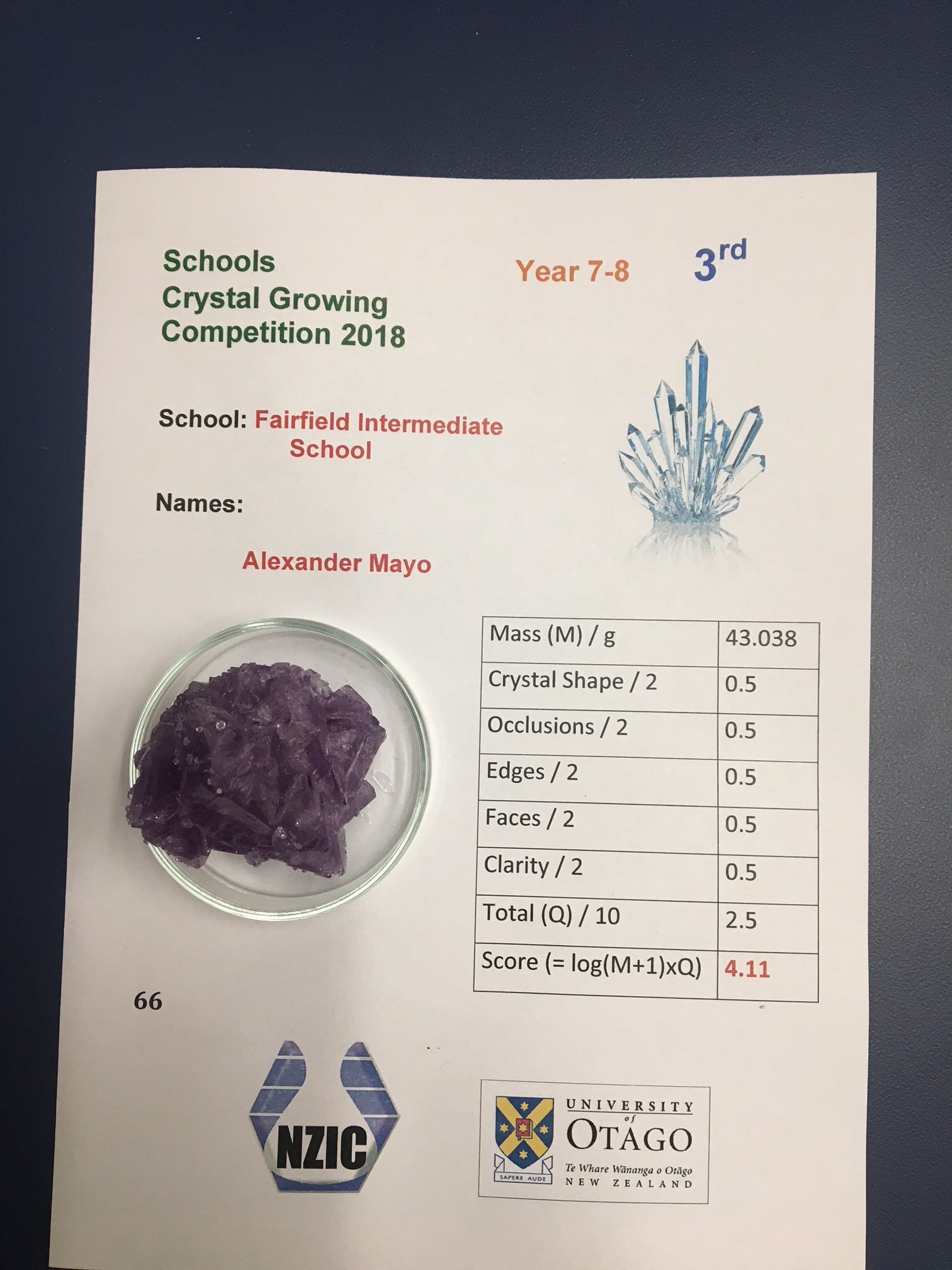
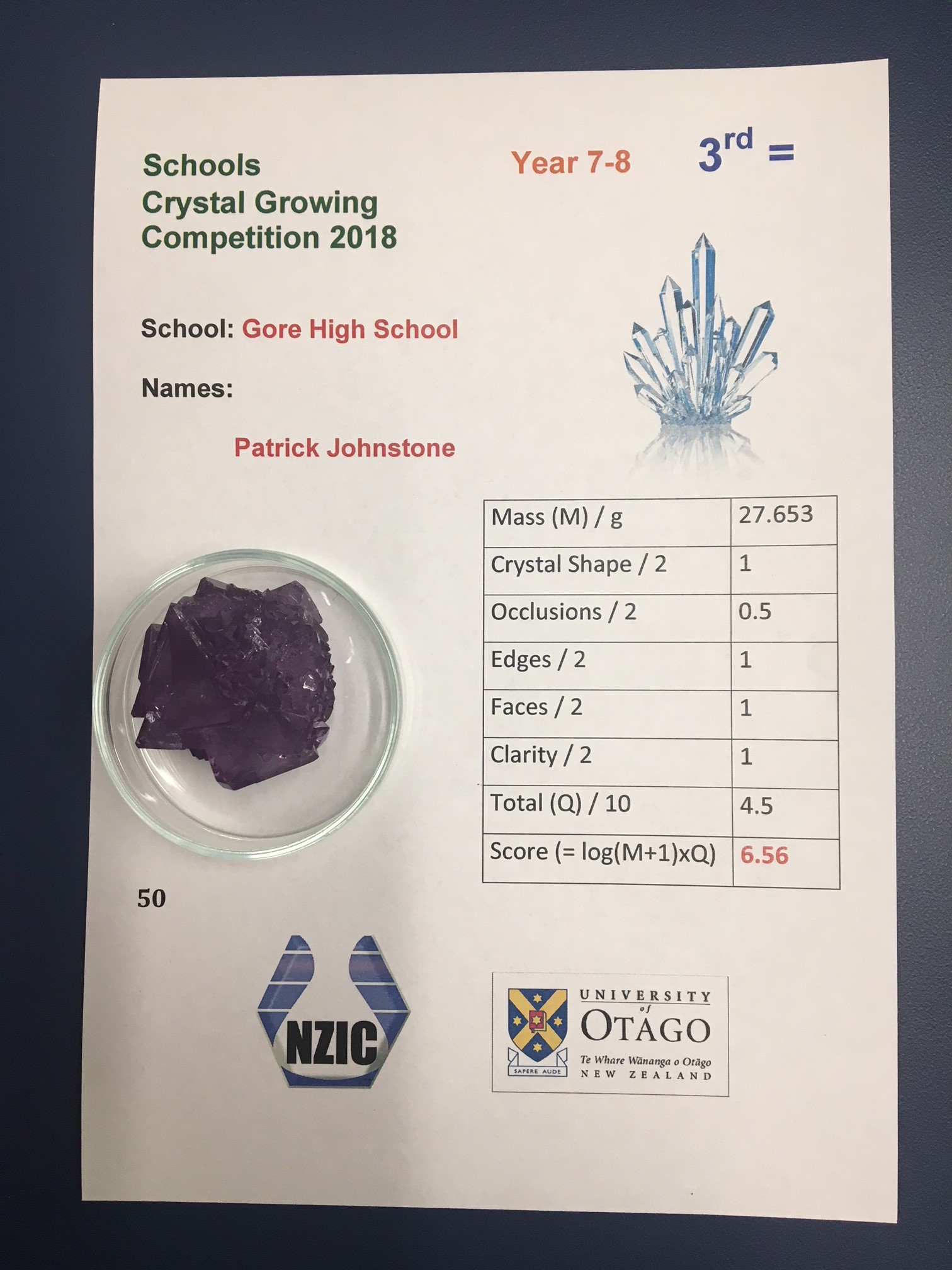
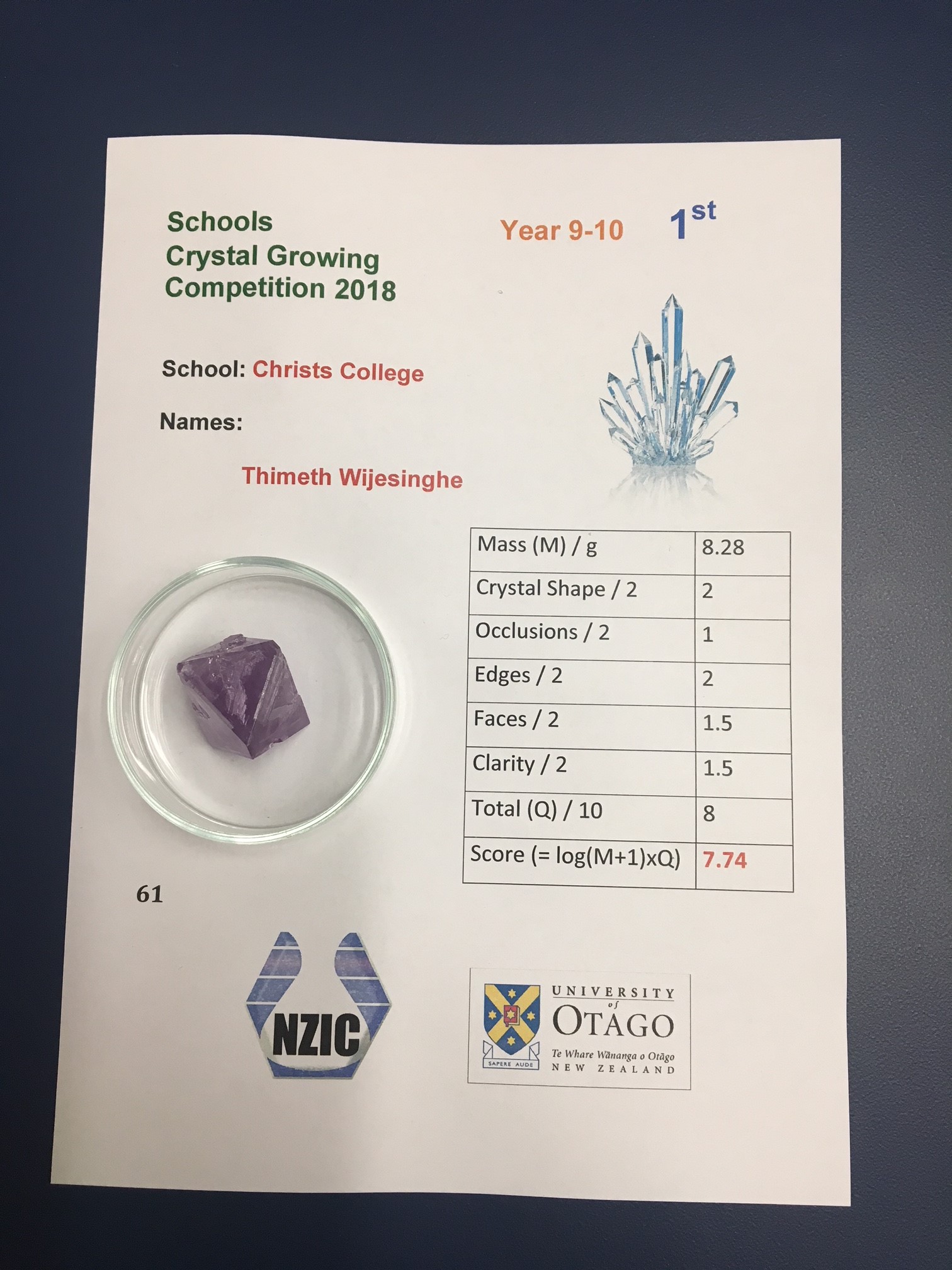
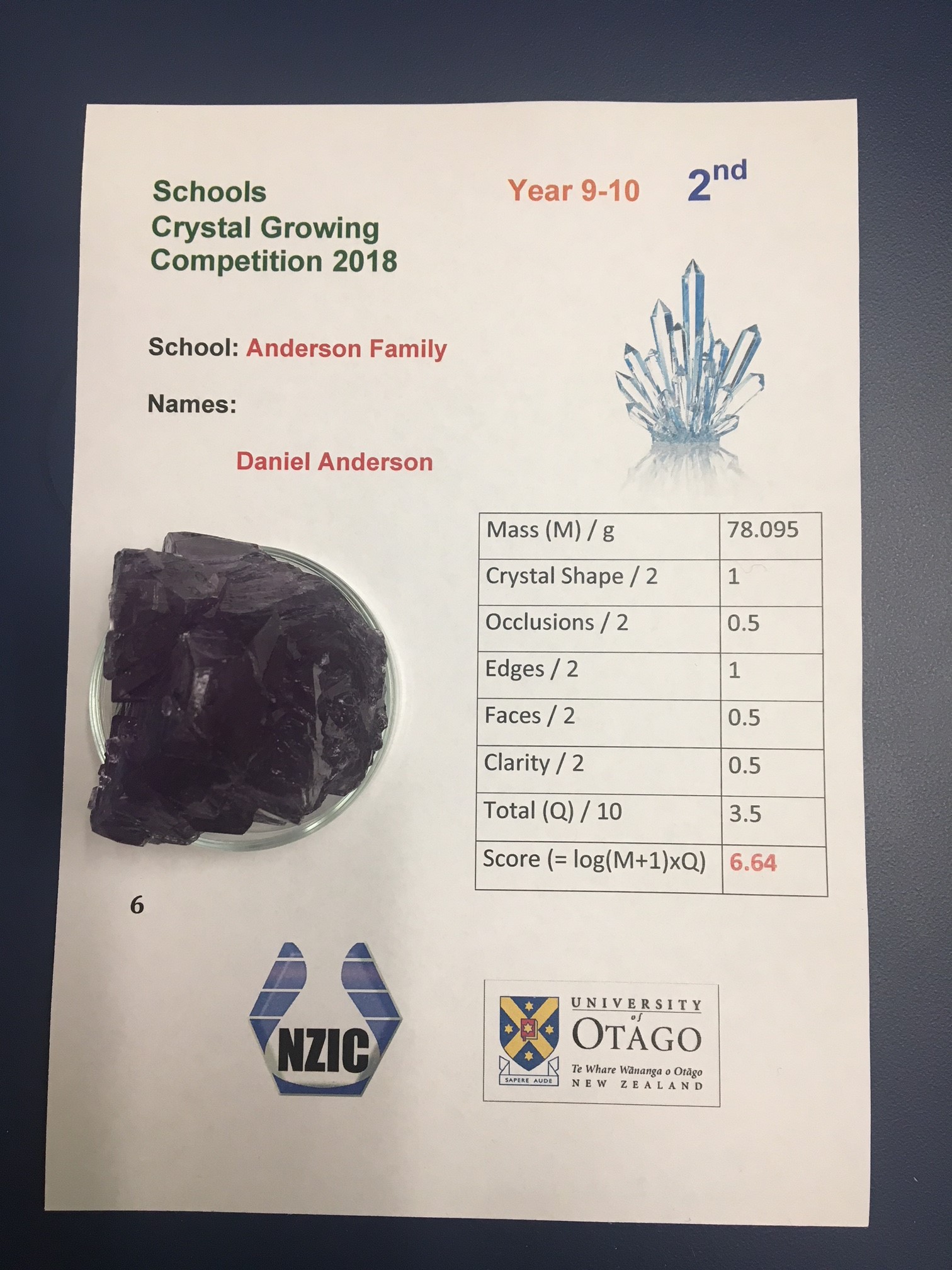
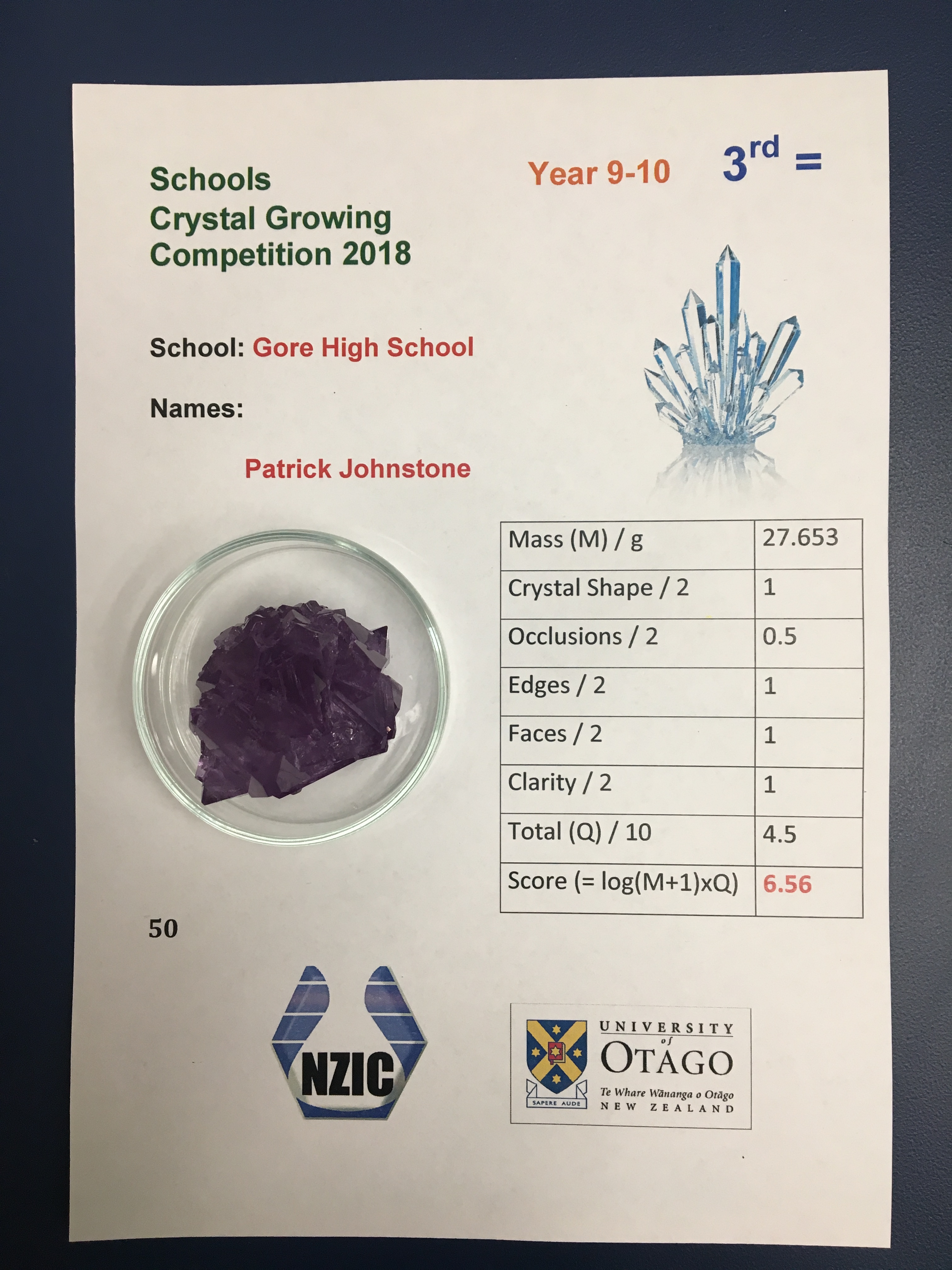
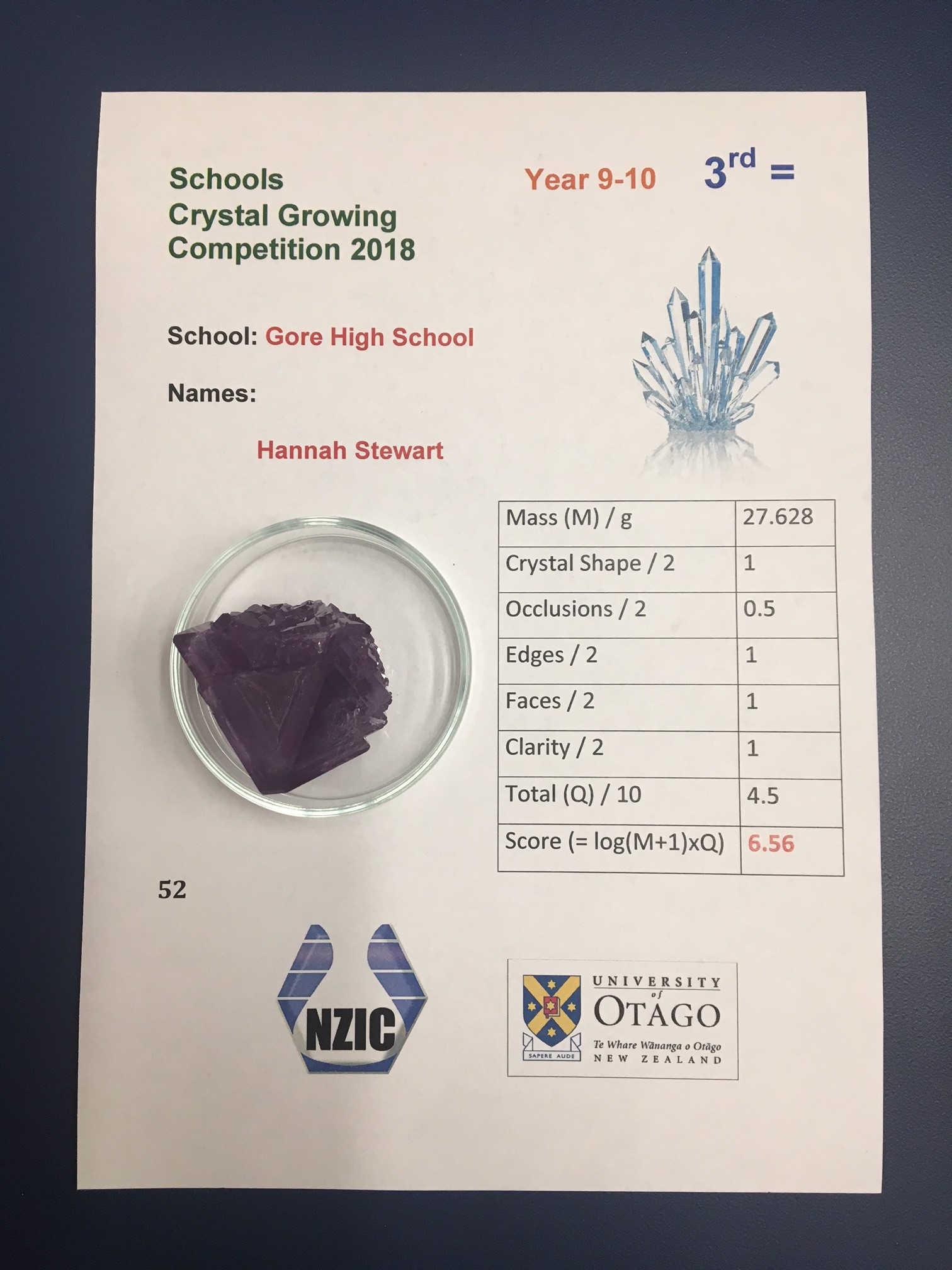
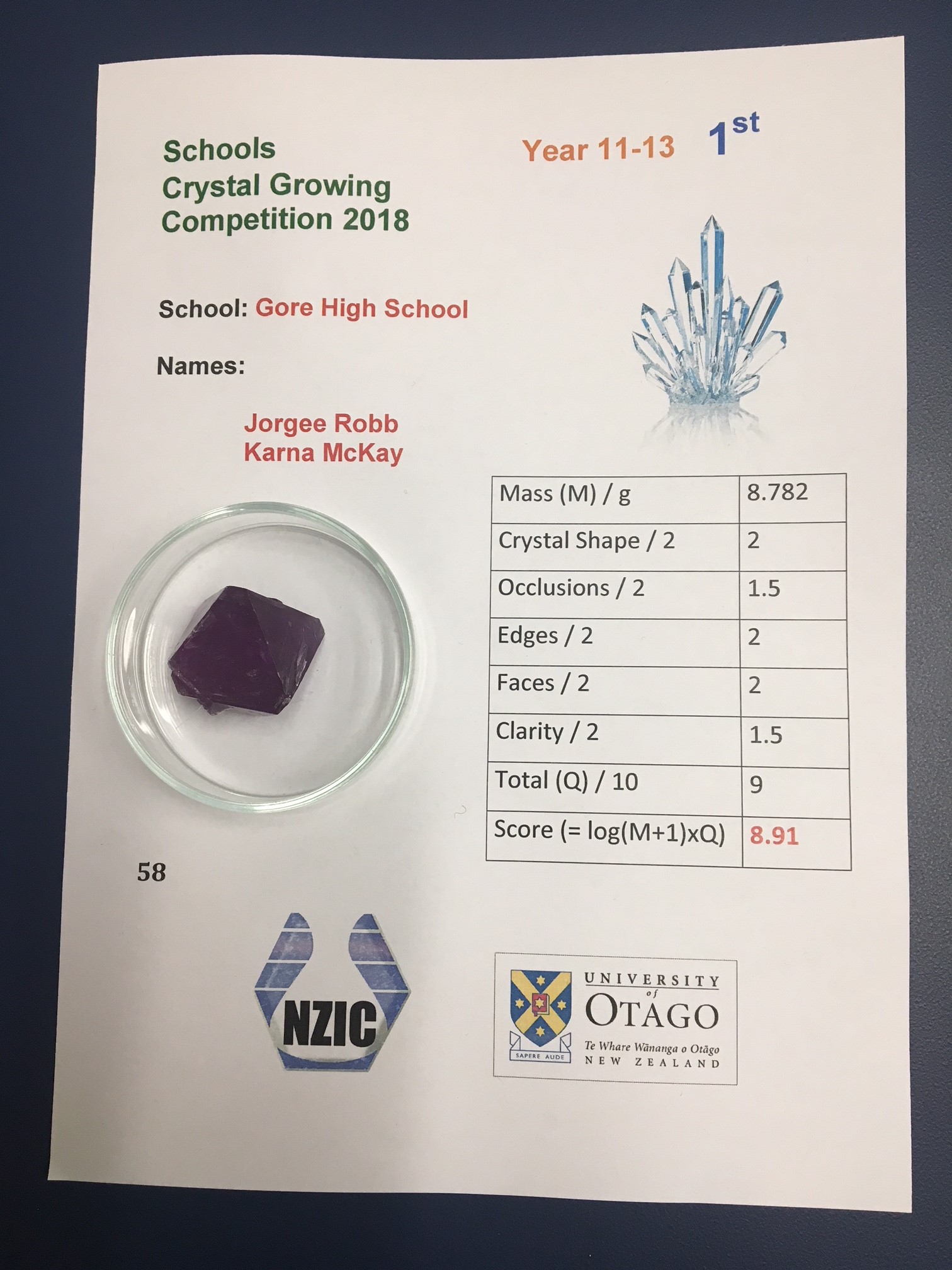
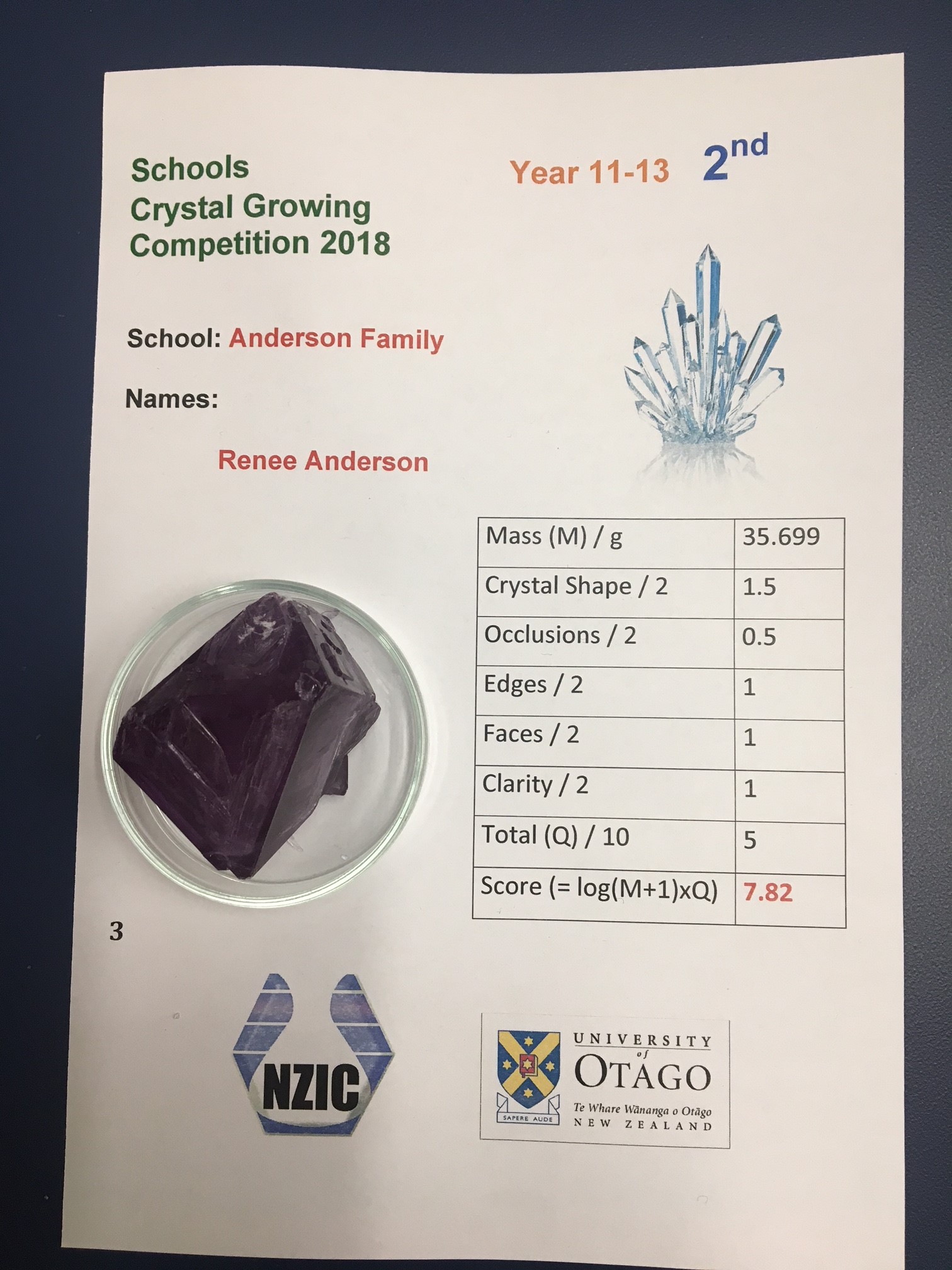
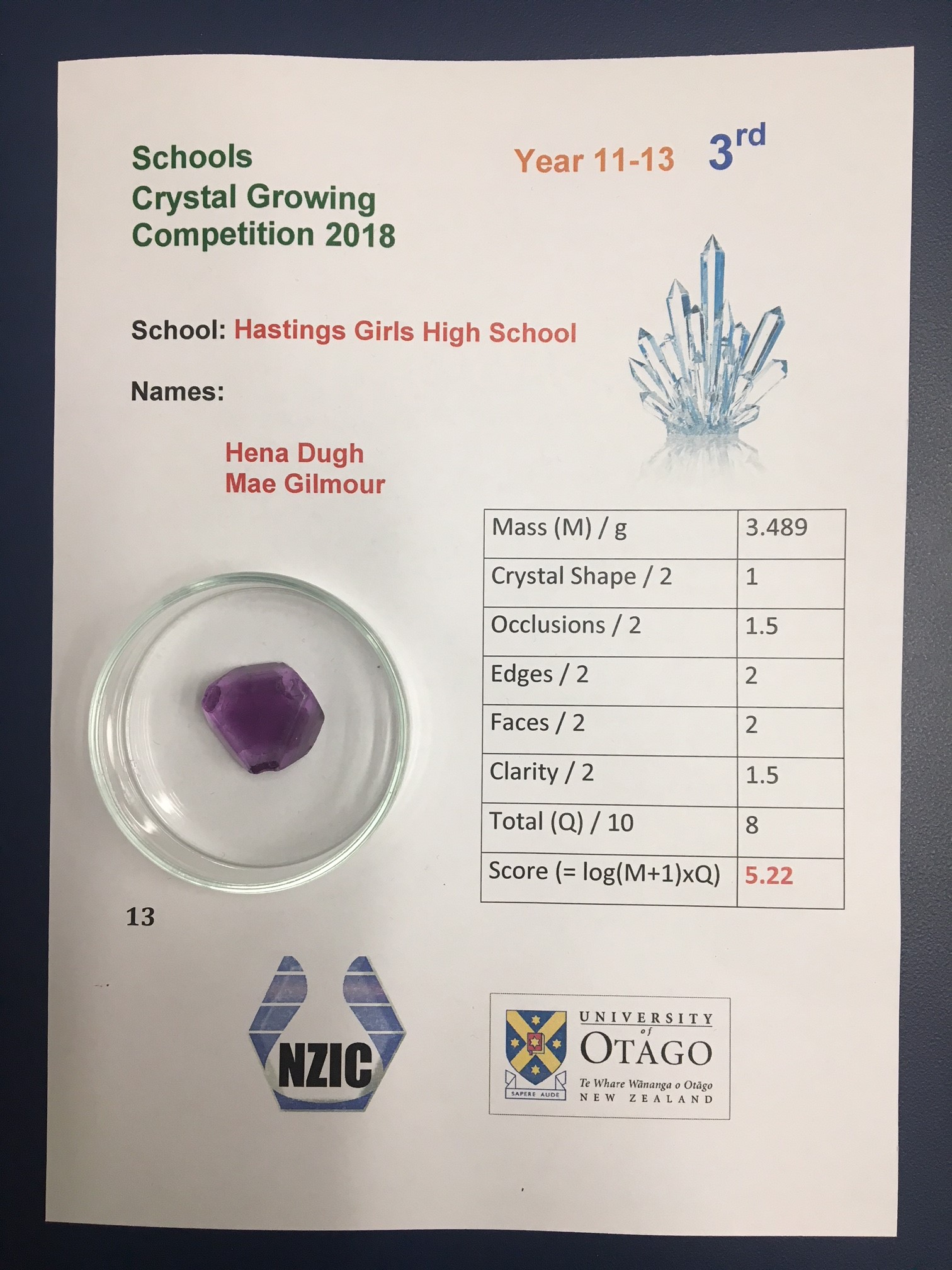
Judging criteria
The method for judging the crystals is that used by the Canadian Chemical Society who have been running crystal growing competitions for many years.
The crystal quality is judged by experts, who will rank the crystals on a scale of 0 to 10. A score of 10 will be given to a perfect gem-quality crystal that fits the ideal crystal structure known for the chemical. (see photos below)
1. The crystal is weighed, and the mass M recorded. The crystal must be a minimum of 0.5 g to be eligible for judging.
2. The quality of the crystal is judged on a scale of 1 to 10, with 10 representing a perfect crystal.
The following factors will be considered in judging quality:
• match/mismatch with crystal type (out of 2)
• presence/absence of occlusions (out of 2)
• intact/broken edges (out of 2)
• well formed/misformed faces (out of 2)
• clarity/muddiness (out of 2)
Total Observed Quality Qo = x.xx (out of 10)
3. The Total Score is then determined as follows:
Total Score = [log (Mo+1)] x Qo
The logarithm of the mass is chosen so that large poor quality crystals don't swamp out smaller good quality crystals. The value 1 is added to the mass so that crystals weighing less than 1 g get a positive score.
A 100 per cent yield crystal made from 100 g (Mt) that scores a perfect 10 on quality (Qt) would get a theoretical maximum of:
[log (100+1)] x 10 = 20.01
The actual score is expressed as a percentage of the maximum. The crystal with the highest Overall Score is the winning crystal.
100 x {[log (Mo+1)] x Qo} / {[log (Mt+1)] x Qt} = Overall Score %
For example, the best overall crystal in the 2001 contest with 150 g starting material weighed 46.53 g and had a quality of 8.65. Its overall score was:
100 x {[log (46.53+1)] x 8.65} / {[log (150+1)] x 10} = 66.6%
The photo below shows the winning crystals from the Canadian Chemistry Society Competition in 2013. This gives you an idea of what the crystals can look like when grown carefully. Crystal number 1 was the best in all of Canada last year.